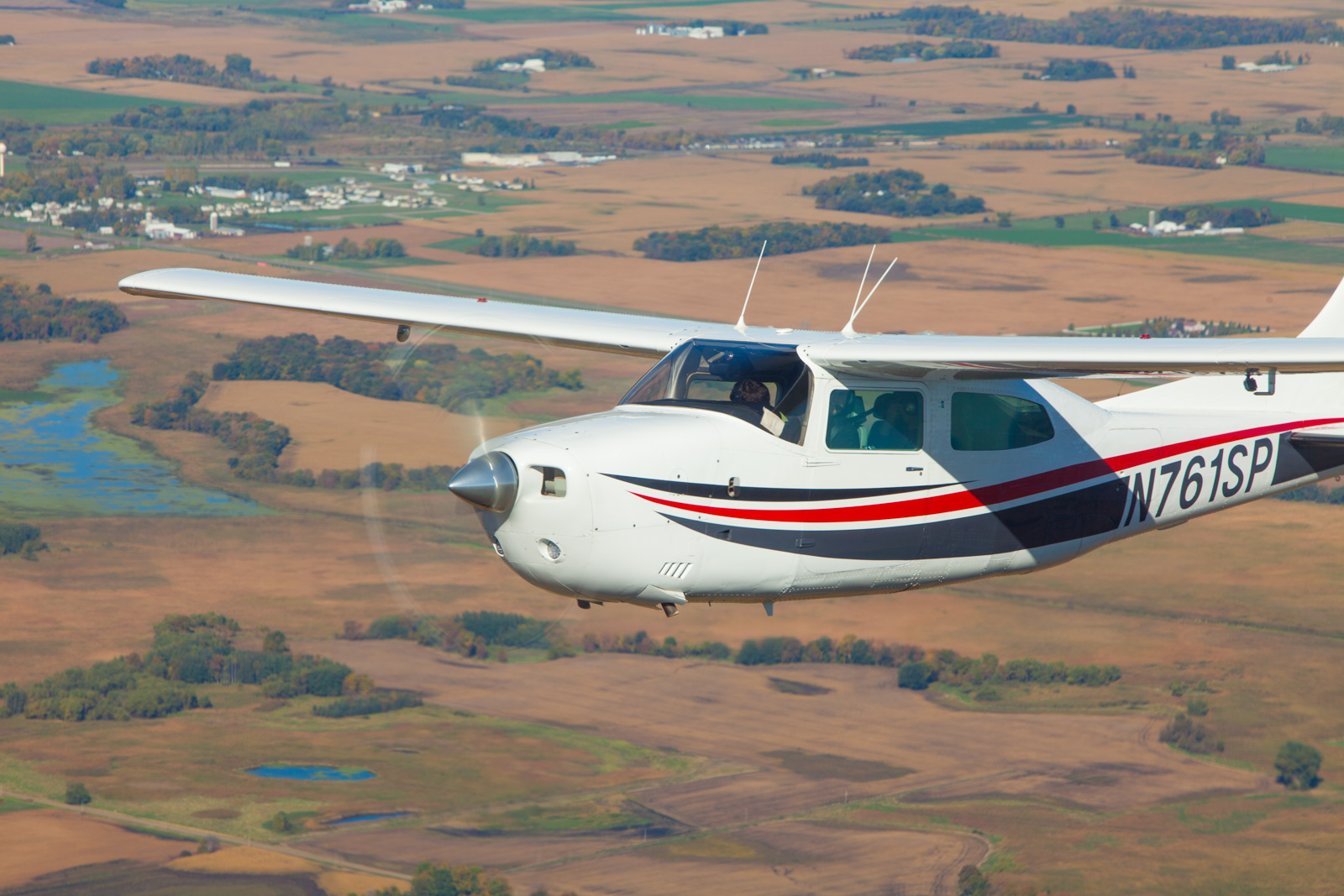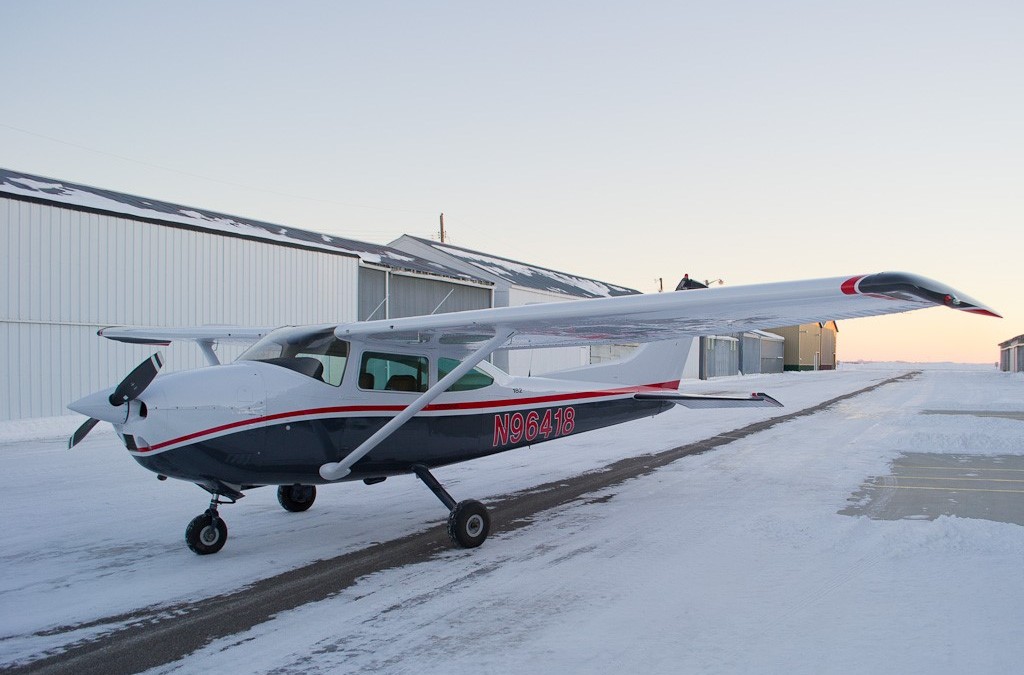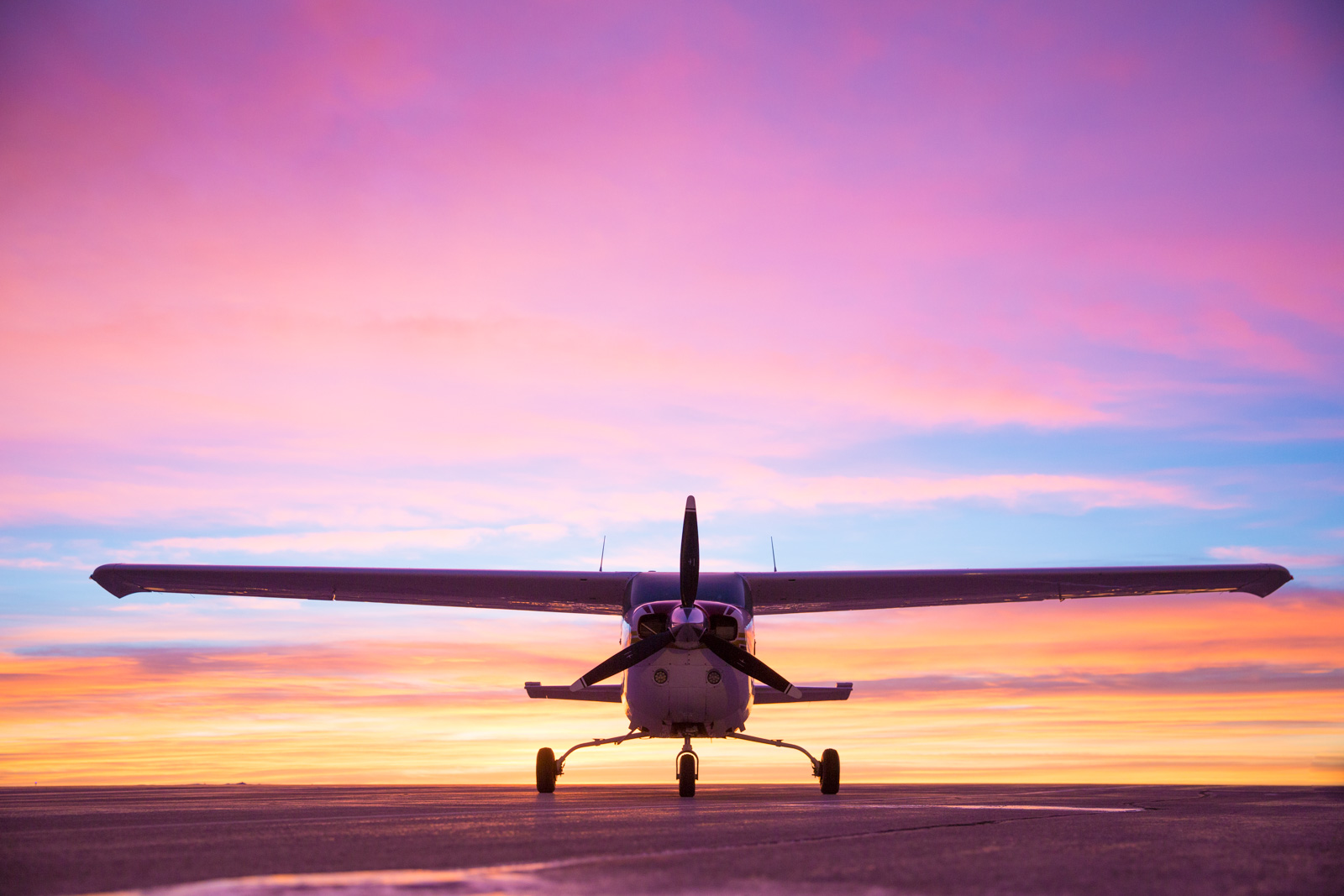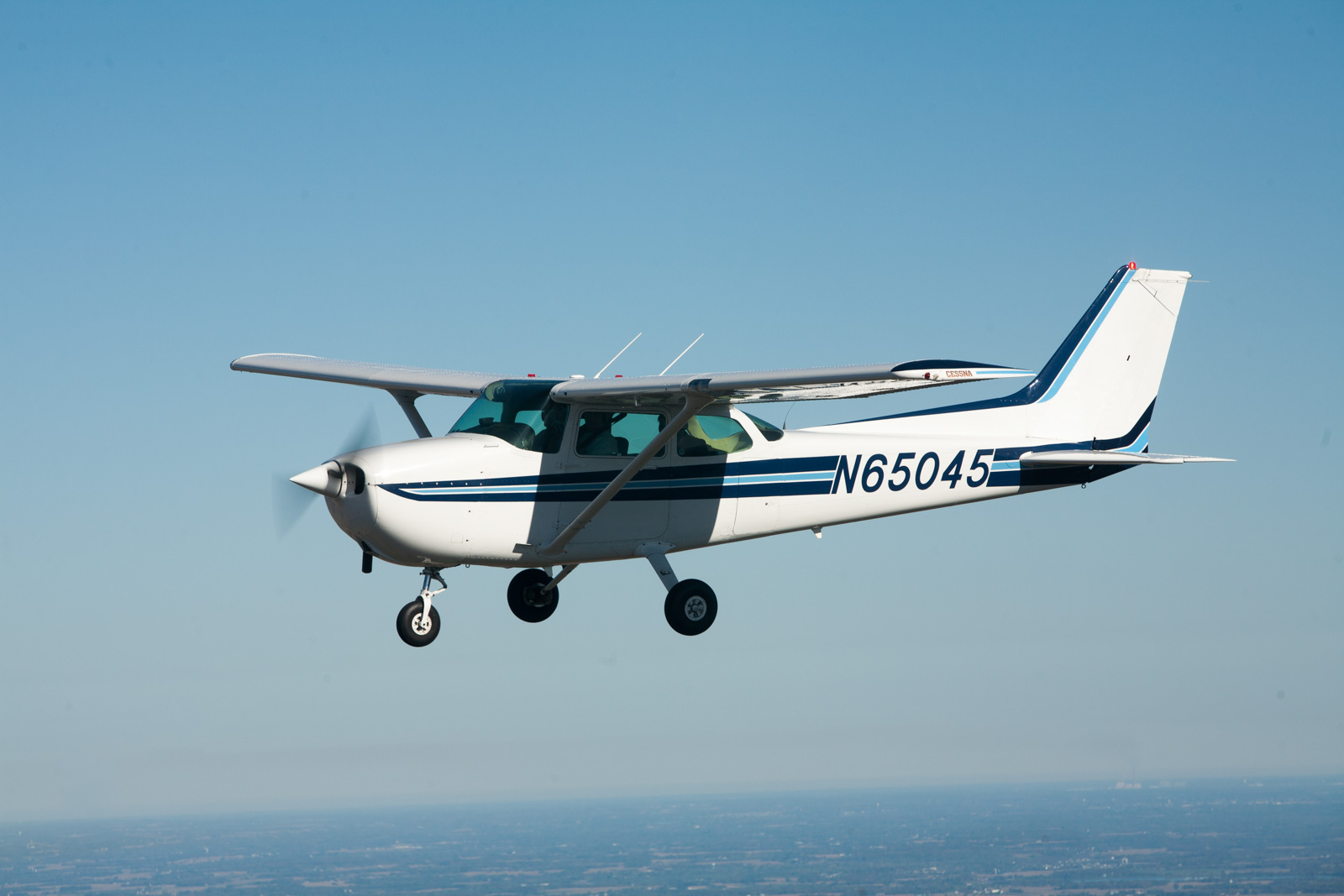 The Twin Cities Cloud 7 Flying Club, based at Flying Cloud Airport (KFCM) in Eden Prairie, MN, is a little like Noah’s Ark. They have two C-172s, two C-182s, and two C-210s. Its focus is on well-maintained, affordable aircraft, and letting people know the glamour and excitement of flight is accessible to anyone. Club Marketing Director Preston Palmer shares how this equity club has thrived.
The Twin Cities Cloud 7 Flying Club, based at Flying Cloud Airport (KFCM) in Eden Prairie, MN, is a little like Noah’s Ark. They have two C-172s, two C-182s, and two C-210s. Its focus is on well-maintained, affordable aircraft, and letting people know the glamour and excitement of flight is accessible to anyone. Club Marketing Director Preston Palmer shares how this equity club has thrived.
Name: Twin Cities Cloud 7 Flying Club
Location: Flying Cloud Airport (KFCM), Eden Prairie, MN
Website: http://www.cloud7.org
Year formed: 1966
Aircraft: 1981 C-172 ($91.85/hr), 1982 C-172 ($91.85/hr), 1977 C-182 ($146.70/hr), 1978 C-182 ($146.70/hr), 1978 C-210 ($179.70/hr), 1978 C-210 ($179.70/hr)
Rates: Tach hours, wet.
Joining fee: $4,500 per share
Monthly dues: $180.50 per month
Membership: 56 active members (loosely capped at 60), and 12 inactive members
Scheduler: Schedulemaster
 Tell me about the club’s history.
Tell me about the club’s history.
It started with seven pilots and one Skyhawk in 1966 and grew from that. The purpose then, as it is now, was to provide well-equipped, professionally maintained aircraft at a reasonable cost per hour.
We’ve had 172s, 150s, 206s, 206 Super Skylanes, we’ve had Cardinals, Cardinal RGs, we’ve had an M20 executive, we’ve had a Bonanza, a Super Decathlon, we’ve had a 182 RG. Since 1964 we’ve had 26 airplanes. Our current fleet includes two C-172s, two C-182s, and two C-210 Centurions.
You recently upgraded the website. Tell me about it.
It’s been live for maybe three months. As a business owner who specializes in marketing and media, the board sought me out to fill a much needed marketing roll. Needless to say I was involuntarily elected to a position which, well, I enjoy!
One of the things we’ve seen in General Aviation in the past 10 or 15 years is the glamour or the desire has disappeared and it’s really become on old boys club. If you’re someone young, if you’re in high school or in college, the idea of getting your pilot’s license and flying for the fun of it has become more of a pipe dream in recent years than it was in the past. I believe the cost is not nearly as high as people generally think it is and they don’t understand how achievable being a pilot really is, especially in a club situation.
The idea was to build a web site to touch on the aspects of 'let’s bring some of the glamour back.' Let’s show that it’s professional, let’s show that it’s modern, let’s show that it’s new. Let’s show it the way that it is. It’s a great group of people, a fantastic group of airplanes, and really it’s attainable for all aspects of life. That was the whole concept of the website and I think we did a good job on it.
I like that you have blog posts. I think that helps make it appeal to a younger audience. How often do you update your posts?
I would say three or four posts a month. Since the web site is new, there is a little bit of a delay in teaching other club officers how to use it. Once people can get on and blog themselves that will increase.
How do you interface your website with your Facebook page?
Generally the Facebook page is updated with real, instant, ‘here’s what’s happening’ type of things. We have found since it’s such a small niche, the number of interactions on Facebook is very small. So we haven’t been pushing that as much as we’re pushing getting people on the blog where they can find things on searches and we can post a little more detailed information a little bit better as far as reaching the pilot community.
Explain the club structure and the membership shares.
Cloud 7 is an equity-based club. The club controls the number of shares outstanding to maintain the sweet spot ratio of members to aircraft. Members are free to sell their own shares or return them to the club. Historically speaking, our club has had a fairly significant list of people waiting for someone to sell a share to get in. Since the end of 2008 when the economy took a really big hit and fuel prices went up, that waiting list started to dwindle. We're at a place now where I think the club has one or two shares available but there's also a short list of current members looking to sell at this time. All new members are interviewed to make sure the club is a good fit.
How many shares are in the club?
The soft target is 60, so 10 per airplane, which is one of the selling points for the club. There are clubs that have 13 to 15 members per airplane from what we've seen. We keep that number a little bit lower, which obviously keeps utilization and availability really good.
How much are shares?
With the upgrade to the Garmin 650s, and new paint and interior on one of our 182's, we've raised that value to $4,500 from the previous buy-in of $4,000. This summer there has been a real spike in new member interest!
Does the club sell the shares or the member?
It is the member’s responsibility to sell their share. At anytime someone can offer to forfeit their share and the club will pay them 50 percent of the current value. So if somebody wants to leave and doesn’t care to list their share, the club will buy back that share for 50 percent of the $4,500 without any questions asked. That rarely happens because there is a high demand. Generally speaking shares sell quickly. People leave our group for one of two reasons—they move out of state or they buy their own airplane.
Do you have a separate membership for students?
Although we are not a flight school, we do have a program to help new pilots start flying without the large upfront cost. We have two shares that we offer specifically designed for people to start flying. A new member who doesn’t have a private pilots license can join our club and they do not have to buy a $4,500 share. They have six months to either get their Private Pilot’s License or six months to make a decision on buying a share.
They can come out and fly our airplanes and they have to pay monthly dues, but they don’t have to spend the $4,500. That gives them the opportunity to get their license with us, and the majority of them buy a share. But if it’s not for them, they can walk away and they don’t have to worry about being stuck with a share.
We usually have one or two people in the program at all times. It helps keep the utilization of the 172s up, which we need, and also helps keep the operating cost down for everyone else.
Do you have other memberships – for aircraft owners or social memberships?
No we don’t. There are two memberships—an active membership is $180 a month for dues, and an inactive membership, which is half of the current monthly dues. Inactive members pay $90 a month, and have no minimum flight requirements. Users take advantage of this for injuries, medical lapses, and personal reasons.
How are the aircraft equipped?
All six airplanes are being upgraded to Garmin 650s from the Garmin 430s. We looked at the trade in price for a Garmin 430, which are at an all-time high. So as a board we said maybe it’s time to upgrade to the Garmin 650s. When we looked at the cost, as a board we weren’t sure we wanted to do this. It would result in an assessment. We opened it up to the general membership as an open vote. Out 60 members only 4 voted against it.
How big was the assessment?
We raised the funds by a member bond. It turned out to be $400 per member spread over time.
Do all six of the aircraft have the same avionics?
That’s one of the things about our club that is very unique from the other clubs in our area; we value fleet consistency. This means the panels in all of our aircraft are virtually identical. As you go from a 172 to a 182 to a Centurion things are in the same place and they’re the same things for the most part, which makes it great using different airplanes. Obviously there’s a big safety factor to it as well.
Do the planes have autopilot?
Both of our 210s and both of our 182s have S-Tec autopilots coupled to the 650 with altitude hold. We also have Shadin fuel flow monitors in the 182s and 210s, so there is absolutely no guessing how much fuel is left in your tank. You know your exact range, your exact endurance, your exact fuel flow and it is a real time read out, so that is a fantastic tool.